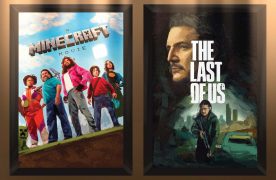Aside from new technologies and big discoveries, cancer “news” consists mostly of human-interest pieces. Small newspapers cover sobs and support from an ailing executive’s hometown, while bigger outlets feature a mother-daughter cancer-fighting duo. Regardless of the medium in which they are published, these stories remind us that being five minutes late for work with unruly bedhead isn’t the worst thing in the world.
Some stories even make us thankful we have hair to mess up in the first place. Just this weekend on Oct. 9, a story like this went viral. It features a couple, Allie Allen and her date Braydon Carpenter, and their high school homecoming dance — a great start to any story. Allie is a 16-year-old from Tennessee who enjoys tweeting selfies with her dog and going to high school football games, and Braydon is her childhood friend. Allie also has cancer. In her blog, she posts updates every few months or so. In July 2014 she told the world about her “Grade 3 Anaplastic Ependymoma,” in September 2014 she was cancer free and in July 2015 she was told the tumors in her head were back. Fast forward to the present — about a year after hearing the best two words: cancer free, she is experiencing the worst two words: hair loss.
She writes that “it’s hard when you’re a teenage girl.” As a teenage girl myself, I can relate. We want to be unique but fit in, be pretty but not boring and be admired but not copied. We want attention, but for the right reasons — and a shiny, bald head just doesn’t fit into that category. It can’t feel good to catch a stranger holding eye contact for a second too long, lost in his own thoughts, wondering how horrible your life must be. Baldness is a label for a brand people don’t want to copy.
This is true, except in Allie’s case, as Braydon shaved his head before the dance and took half of the strangers’ stares off Allie for a night. ABC, MTV and countless other news sources have picked up on this story, pulling the same lines I used from her blog, screenshot-ing her tweets and quoting her school’s board members. But I haven’t seen a single line said by Allie herself. I really hope she blogs about it.
Getting recognized in a positive way by huge news organizations is certainly a form of the right kind of attention, but like a stranger who stares, it can be objectifying. It takes Allie away from her peers, and replaces “teenage girl” with “cancer girl.” It highlights the shiny, bald label on her head. Instead of finding out if Allie did the cha-cha-slide or sipped red punch, these news sources informed us that that Braydon’s high school called him a “class act.” Is this the kind of journalism people want to read? Maybe, but it lacks the human part of human-interest.
That is the difference between a primary source (Allie’s blog) and a secondary source (the news), and it is so important to consider both. Allie’s blog may be free-flowing, stylistically flawed and riddled with grammatical errors — but it is real. No editor vetoed her ideas, picked through her sentences or deleted details. The personal nature of her writing allows people to relate to her on a first name basis. Instead of “Allen,” as some journalists call her, she is just Allie.
And Allie is courageous and inspirational. Her blog brings a humanistic side not only to her story, but also to the collective narrative of all cancer patients. She inspires others to feel comfortable opening up about their experiences and sharing with the world, starting a chain reaction that helps evolve the way we view cancer patients. By getting to know Allie, we can begin to peal off the labels that have stuck around for far too long. She doesn’t have to be cancer girl — she can be your friend.











